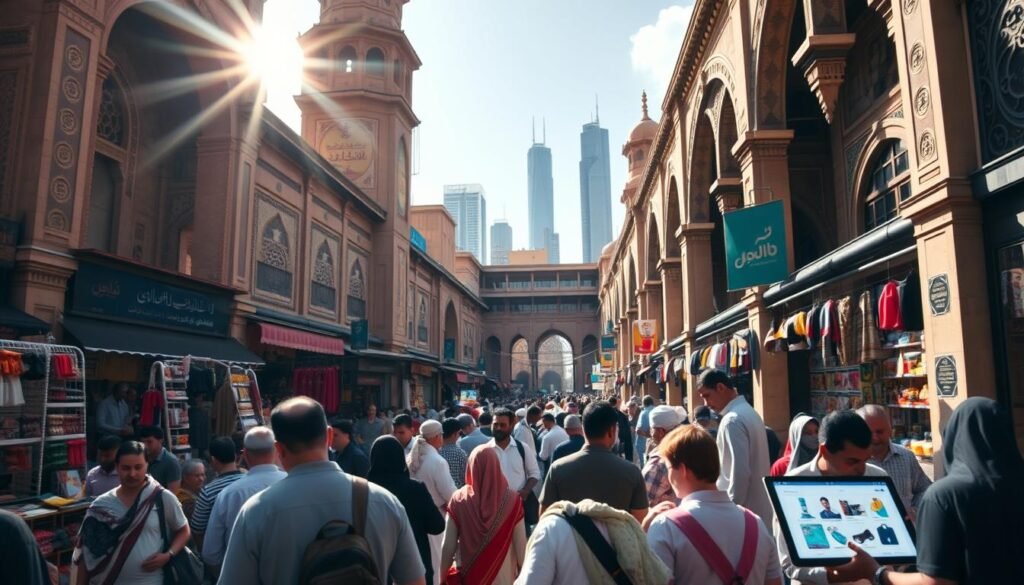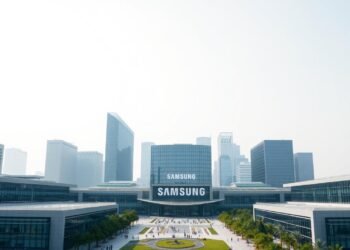What does it take to build an online marketplace that transforms shopping in an entire region? The answer lies in the remarkable story of a company that started as a small auction site and grew into a tech powerhouse.
Founded in 2005, this business quickly evolved from a simple platform into the largest digital shopping destination in the Arab world. By 2017, it offered over 8.4 million products across 31 categories, serving millions of customers monthly.
The company’s success wasn’t just about selling goods online. It built critical infrastructure like payment systems and logistics networks, paving the way for e-commerce growth across the region. Its $580M+ acquisition marked a major milestone for Middle Eastern startups.
Key Takeaways
- Started as an auction site before becoming a full online marketplace
- Grew to serve 23 million monthly visitors at its peak
- Built comprehensive e-commerce infrastructure including payments and delivery
- Became the first Middle Eastern unicorn with $275M in funding
- Acquired by a global retail giant in one of the region’s largest tech deals
The Vision Behind Souq.com: Ronaldo Mouchawar’s Dream
In 2005, a bold vision for digital commerce in the Arab world took shape. Co-founder Ronaldo Mouchawar recognized the region’s lack of a trusted online platform, despite rising internet adoption. Partnering with Maktoob, he launched an auction site to test his idea.
From Auction Site to E-Commerce Giant
Early success proved demand, but limitations were clear. By 2011, the team pivoted to a fixed-price marketplace, mirroring Amazon’s model. CTO Wisam Daoud led tech upgrades, while localized payment options like cash-on-delivery boosted trust.
Expansion followed swiftly. Operations stretched across seven countries, including the United Arab Emirates and Qatar. By 2014, $150M in funding fueled fulfillment centers and last-mile delivery networks.
Empowering Local Trade in the Arab World
Mouchawar’s mantra—“Empower people locally to trade online”—drove partnerships with SMEs. Subsidiaries like QExpress tackled logistics, while Helpbit offered repair services. The largest e-commerce hub in the region wasn’t just a business; it was infrastructure.
By 2014, 2,500+ employees supported this mission. The platform’s Arabic-first design and regional adaptations set a blueprint for others to follow.
Key Milestones in the Souq.com Story
From humble beginnings to a billion-dollar exit, the milestones of this marketplace tell a compelling story. Each phase reflects strategic bets that reshaped e-commerce in the Arab world.
2005–2009: Founding and Early Growth
Launched as part of Maktoob, the site began as a consumer-to-consumer auction platform. Early experiments proved demand but revealed limitations in scalability.
In 2009, Yahoo’s $164M acquisition of Maktoob spun off the company as an independent entity. Backed by Jabbar Internet Group, it gained freedom to pivot toward a broader vision.
2011–2016: Transition to Marketplace and Unicorn Status
The shift to a fixed-price model in 1 mirrored global leaders but with local adaptations. Leadership under Samih Toukan and Hussam Khoury prioritized tech upgrades and seller onboarding.
Funding rounds fueled expansion: $75M in 2014 (valuing the business at $500M) and $275M in 2016, achieving unicorn status. Strategic moves like investing in InstaShop diversified offerings.
2017: The Amazon Acquisition
A fierce bidding war erupted, with Emaar Malls offering $800M versus Amazon’s $580M. The latter won, integrating the site into its global network while retaining regional trust.
Rebranding to Amazon.ae (completed by 2021) marked the final chapter of this story. The acquisition validated the region’s tech potential and cemented the platform’s legacy.
Souq.com’s Impact on the Arab World’s E-Commerce Landscape
Changing how millions shopped online required more than just a website—it demanded trust. The platform didn’t just lead the market; it rewrote the rules, capturing 51% of MENA’s e-commerce share by 2016. Its influence stretched from payment systems to consumer habits, leaving a blueprint still used today.
Revolutionizing Online Shopping in the Region
Before its rise, cash transactions dominated the region. The platform changed that by introducing digital payments and warranties. Over 15,000 SMEs joined, leveraging its reach to grow their business.
Cultural adaptations like Ramadan sales events resonated deeply. Mobile-first design and Arabic search algorithms made the customer journey seamless. Monthly visits soared to 45 million, proving demand for localized solutions.
Building Infrastructure and Trust
The largest e-commerce platform in MENA invested heavily in logistics. It built warehouses and partnered with Payfort to secure payments—later integrated into Amazon Pay. Authenticated sellers and buyer protection policies set new standards.
By 2017, its 3,000 employees supported operations across the Arab Emirates and beyond. The deal with Amazon validated its role as a regional pioneer, leaving a lasting tech and talent legacy.
Conclusion: Lessons from Souq.com’s Journey
The rise of this e-commerce giant offers powerful lessons for entrepreneurs. Ronaldo Mouchawar proved that understanding local needs is key. His vision blended global strategies with regional trust-building.
Success came from patience and smart funding. The platform prioritized infrastructure over quick wins. Today, its legacy lives on through Amazon’s $11B+ MENA operations.
For the region, it normalized digital commerce. Sellers thrived, and customers embraced secure online shopping. Mouchawar’s quote rings true: “Combining technology with trade gives the world new ways to connect.”
This journey shows how bold ideas can reshape markets. The right mix of vision and adaptation creates lasting impact.
FAQ
Who founded Souq.com?
Ronaldo Mouchawar co-founded the platform in 2005, transforming it from an auction site into the largest e-commerce marketplace in the Arab world.
What made Souq.com successful in the region?
It addressed gaps in online shopping by building trust, localizing payment methods, and improving logistics—key challenges in the Middle East at the time.
When did Amazon acquire Souq.com?
The acquisition happened in 2017, marking a major milestone for e-commerce in the United Arab Emirates and the broader region.
How did Souq.com impact businesses in the Arab world?
It empowered small and medium-sized enterprises by providing a digital marketplace, boosting economic growth and accessibility for local sellers.
What was unique about Souq.com’s early business model?
Initially launched as an auction platform, it pivoted to a fixed-price marketplace to better meet customer needs and scale operations.
Why is Souq.com considered a pioneer in the region?
It was the first major online shopping platform to offer secure transactions, localized support, and reliable delivery across the Arab world.









